Florian Cramer
From art to Brexit to Tesla cars
Autonomy is a position under attack, a question rather than an answer, an idea that is constantly in a process of being redefined and reinvented. This essay attempts to survey and decipher the multitude of meanings, dimensions and issues of autonomy that are relevant to artistic practices.
‘Autonomy’ is a semantic rabbit hole. When discussing the term from the perspective of the arts, speakers of different languages may believe they mean the same thing while they are actually talking past each other. In the Netherlands and Flanders, for example, ‘autonome beeldende kunst’ (literally: ‘autonomous visual art’) corresponds to what is called ‘fine art’ in English-speaking countries, and ‘free art’ (‘freie Kunst’, ‘arts libres’) in German- and French-speaking countries. In the German philosophical tradition, the notion of ‘autonomy’ is intrinsically linked to aesthetic theory rather than artistic practice, while in Italy and the English-speaking world, it is chiefly associated with political activism.
To take Flanders once more as an example: the region’s main civic conflict is related to its possible political autonomy within, or from, the nation-state of Belgium. In other countries, issues of autonomy are reported by news media on a daily basis: Brexit, for example, is often seen as a plea for the UK’s autonomy from the EU (in a country which, unlike continental Europe, otherwise lacks the historical experience of giving up parts of its autonomy to larger political entities). Brexit in turn may end up triggering Scotland’s national independence or increased political autonomy. The Islamic State of Iraq and the Levant (ISIS) is an autonomy campaign for an Islamist caliphate. In the USA, Donald Trump’s politics of ‘America first’ can be read as yet another campaign for national autonomy; at the same time, as a conservative, Trump is against liberal abortion rights – which have been a major issue of individual autonomy for feminists, as they directly address the autonomy of women to decide about their own bodies.
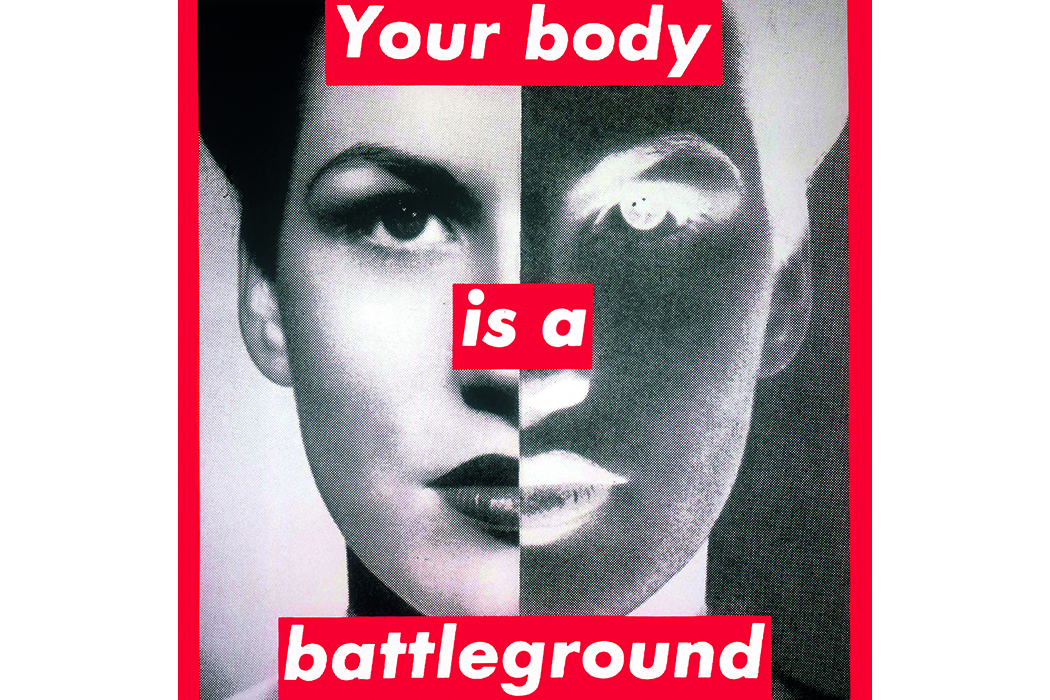
In America, Google, Tesla and Uber are conducting field tests for computer-driven cars which, since they no longer require human drivers, are known as autonomous cars. Such developments are part of a broader narrative of autonomous systems in engineering and systems theory, which are potentially connected to the arts in ways that are not only technical, but also philosophical.
All of the above examples illustrate that autonomy is a term from both the past and the present, with a politics that is anything but clear-cut, and with different definitions of autonomy existing in different fields of knowledge.
Crisis
The autonomy of art has arguably never been as contested as it is today, whether in the field of art theory, artistic practice, or cultural politics. In the Netherlands, the much-vaunted autonomy of the arts proved to be extremely fragile when the Dutch political mood changed in 2011 and radical funding cuts shook the foundations of the country’s contemporary art system.1 The debates of 2011 tended to reduce the issue to one of humanism vs. free-market capitalism; however, as far as contemporary art and the concept of autonomy are concerned, this was already an outdated discussion. Ultimately, the whole affair exposed the arts as being economically not autonomous at all. This affected not only fine art, but also Dutch design and the ‘creative industries’ in general, which were also largely dependent on cultural funding systems – since many designers and architects relied on contemporary art institutions as their clients for their more experimental projects. These projects were thus simultaneously ‘autonomous’ (in the Dutch sense of non-applied, free-spirited art) and institutionally dependent (in the economic sense).
Conversely, the ‘creative industries’ that were introduced as a new paradigm for the Dutch creative sector after 2011 were not industries in any literal sense, since they relied on public funding systems of their own. Thus, when citing the Netherlands as an example, one should bear in mind that there is neither any true ‘autonomy’, nor many real ‘industries’ in the arts. This leads to the more fundamental question of whether such a thing as autonomy exists at all, or whether – considering the interdependence of things and beings within any system – ‘autonomy’ isn’t in fact just another outdated romanticist concept.
Politics
At its root, the term ‘autonomy’ is political in nature. The Greek word ‘nomos’ means ‘law’ or ‘norm’, while ‘auto’ means ‘self’. ‘Auto-nomos’ thus refers to anything that follows its own law. Since laws in most cases aren’t individual, but are written by some government or statehood, radical claims for autonomy will, by definition, clash with higher legal authorities. However, autonomy does not need to be understood as absolute. There is, for example, relative autonomy wherever the law provides no regulations of its own and leaves room for individual or community policies. Common examples are house rules in bars, shops and schools (including those rules that are typical of squatted ‘autonomous’ spaces, such as a ban on sexist and racist language, which otherwise would still be protected by freedom of speech).
All of these examples imply potential conflicts over autonomy, such as the question of whether school systems should be public, or whether home schooling can be permitted. The very definition of democratic (as opposed to totalitarian) political systems addresses the degrees of relative autonomy citizens are granted – which is further complicated by the fact that such autonomy can be abused for anti-democratic purposes.
The issue of ‘autonomy’ is closely linked to free will, implemented either in the form of laws, or of community rules and policies that are accepted within the broader rule of law. For example, house rules formulated for a school may allow the school to expel students who violate these rules. However, if the rules are shown to be in conflict with the law, these students may then go to court and sue their way back into the institution – if necessary, backed by the state monopoly on violence in the form of a police escort. This happened in United States in the 1960s, when black students needed to be escorted to campuses by the police. A similar legal conflict involved the civil rights activist Rosa Parks, who refused to accept the laws and regulations according to which public transportation companies would assign different bus seating areas to black and white people.
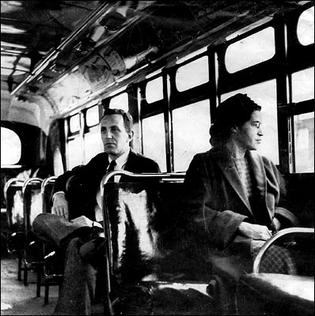
By https://www.loc.gov/rr/print/list/083_afr.html#ParksR, Fair use, https://en.wikipedia.org/w/index.php?curid=3034067
Prior to Parks’ intervention, a number of civil rights lawsuits against racial segregation in public transportation had led to conflicting legislations on federal, interstate and state levels, enforced through the internal regulations of transportation companies. In other words, different social actors – including racist state governments and bus companies, as well as anti-racist civil rights activists – were locked in a struggle for their autonomy to make or break rules. The civil rights movement made this conflict visible by translating it from an abstract legal realm into a personal conflict. Rosa Parks’ act of civil disobedience thus became a piece of activist performance art that articulated a political issue into visual culture through the iconic, staged photograph of Parks sitting in the ‘wrong’ bus seat; a textbook example of the power of image-making. The famous photograph of Rosa Parks was taken the day after a United States Supreme Court decision finally resolved these legal conflicts by declaring racial segregation unconstitutional.
Contemporary debates address issues of whom (relative) autonomy should be granted to: to all human beings? To citizens but not immigrants? To citizens of different classes, races, abilities? Patients, prisoners? To non-humans such as animals, plants, and things?
For the Renaissance humanist philosopher Giovanni Pico della Mirandola, autonomy marked the difference between people and animals, since, according to his reasoning, humans possess autonomy while animals don’t. At first glance, the rise of autonomy as a concept within the arts in the 18th and 19th centuries was a consequence of humanist thinking; but it also coincided with the rise in Europe of the cultural concept of the nation-state, which emphasised the autonomy of a collective body. This logic has been reversed by artists who, instead of catering to the cultural construction of the nation-state they belong to, have created micro-nations of their own, such as Atelier van Lieshout’s free state AVL-Ville in the harbour area of Rotterdam in 2001, ‘a utopian village, where people could live and work in an ecological, autarkic way.’ 2 Older examples include the Otto Muehl commune (which grew out of the Viennese actionism art movement), beginning as an experimental living and free-love community in the early 1970s and ending as a dystopian dictatorship in the 1980s. The commune was dissolved by the police after it was discovered that children growing up in the commune were systematically abused. Both AVL-Ville and the Muehl commune merged artistic autonomy and political autonomy, following a logic according to which radical self-governance within one’s art ultimately requires one’s own statehood;3 the main difference is that AVL-Ville was always intended as a light-hearted, ludic experiment.
Since the early 1990s, the Slovenian artist collective Irwin/Neue Slovenische Kunst (NSK) and the band Laibach have been issuing passports for their own transnational NSK State, as a piece of ironic conceptual art commenting on the violent breakup of Yugoslavia. The passports ended up being purchased in large numbers by Nigerians who were convinced that these would allow them to travel and immigrate to Europe. When members of Irwin travelled to Nigeria to explain the project, they were interrupted by people – likely those who were re-selling the passports – insisting that the NSK State was an actual country. Declarations of autonomy thus do not necessarily result in control: while the artists had control over designing and issuing the passport, they could neither control its interpretation, nor the resulting performance (a phenomenon that has often repeated itself in internet meme culture).
Autonomy as ideology
Leaving aside for now the (complex) differentiation between autonomy, sovereignty and hegemony, arguably one of the most influential political theories and practices of autonomy originated in the Italian radical left of the 1970s under the name ‘autonomia operaia’ (‘workers’ autonomy’). Breaking with Communist Party central committees and trade unionism, the movement evolved around decentralised self-organisation and manifested itself through various platforms including experimental pirate radio stations (such as Radio Alice) and squatted ‘social centres’. The Italian autonomist movement spilled over to other countries including Germany and the Netherlands where it is still known as ‘Autonomen’, operating at the fringes of the radical communist and anarchist left.
In the 1990s, some of these autonomist concepts were absorbed by the American countercultural writer Hakim Bey (a.k.a. Peter Lamborn Wilson) in his concept of ‘Temporary Autonomous Zones’. As the name implies, the inhabitants of these zones no longer claim territories on a permanent basis, but instead act ‘like an uprising which does not engage directly with the State, a guerilla operation which liberates an area (of land, of time, of imagination) and then dissolves itself to re-form elsewhere/elsewhen before the State can crush it.’ 4 This concept went on to influence illegal rave subculture and early internet activism and art. However, the political tactics it proposes exist on the political right as much as on the left: for example, in the militia movement in the U.S., in the ‘nationally liberated zones’ created by Neo-Nazis in Eastern Germany, in neo-fascist squats such as Casa Pound in Rome (named after the writer Ezra Pound) and in the German and Dutch Neo-Nazi movement of the ‘Autonomous Nationalists’ which copies the tactics and visual culture of the left-wing ‘Autonomen’.
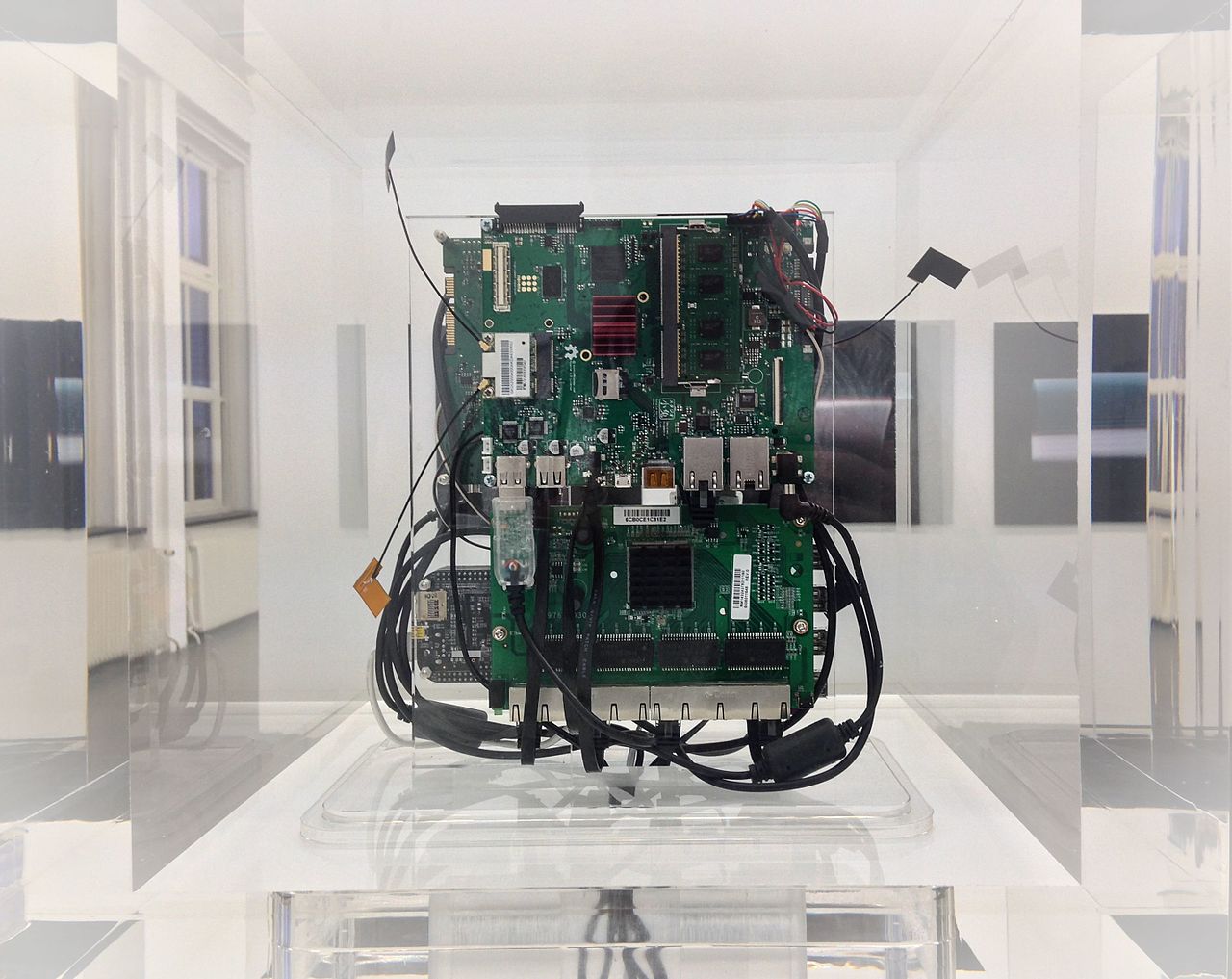
The same political ambiguities can be found in internet activism since the 1990s. Political autonomy has always been one of internet activism’s major driving forces, from self-run community servers to Bitcoin and TOR: as a peer-to-peer currency designed to operate outside the control of central banks, Bitcoin applies the principle of decentralised self-organisation to the financial system – a project that, as reconstructed by the scholar David Golumbia, has its ideological roots in right-wing libertarianism. TOR, a decentralised service for anonymised web surfing, was made into a contemporary artwork by the geographer and artist Trevor Paglen, in collaboration with the (controversial) internet activist and former WikiLeaks spokesman Jacob Appelbaum. Using the visual language of minimal art, Paglen and Appelbaum built a transparent "Autonomy Cube" with a running TOR server inside. The installation uses art museums as its safe space. By appearing as a piece of contemporary art and being placed inside an institution whose works are granted (relative) autonomy under the principle of freedom of art and expression, the Autonomy Cube is less likely to be taken down by the authorities than a TOR server in some anonymous data centre. It thus tactically uses the (relative) autonomy of art in order to gain political autonomy.
In more mainstream areas of internet culture than Paglen’s and Appelbaum’s installation, the ideology of cyberlibertarianism is influential in the contemporary redefinition of autonomy, as its projects intrinsically link ideals of political and economic autonomy with the technology of autonomous systems, including artificial intelligence. Cyberlibertarianism can be seen as a problematic ‘homesteader’ ideology based on privilege (including the financial gains of early Bitcoin miners, who reaped the benefits of what amounts to a pyramid scheme) and involving hyper-individualist, neo-reactionary ideologies as advanced by public figures such as Silicon Valley investor Peter Thiel, who defends business monopolies, openly mistrusts democracy as a political system and pays students to drop out of college. No doubt, this is an autonomist ideology; among its intellectual founding figures is the writer Ayn Rand, whose novels glorified independent entrepreneurs revolting against the state and refusing any form of social solidarity.
Aesthetics
Ayn Rand’s libertarianism amounts to a late and popularised form of the romanticist aesthetics of the creative genius, which developed in parallel to the concept of ‘autonomous’ art in the late 18th and early 19th centuries. From a broad historical perspective, however, the autonomy of art is still a very recent concept, which is furthermore mostly limited to Western culture – as opposed to Asia and Africa, as well as medieval Europe where there was no division between the disciplines of art, design, technology and crafts (and where a concept such as ‘maker culture’ would have hardly amounted to anything new). In Western aesthetics, the notion of autonomy is linked to emancipation from the dual patronage of the church and aristocratic courts which traditionally dictated the content of art. Arguably, the situation has hardly changed in an age when the role of art patronage has been taken over by public institutions and private collectors.
In enlightenment, romanticist and modernist aesthetic philosophy, autonomy meant that art followed its own rules. This was first described by the 18th-century philosopher Immanuel Kant as ‘disinterested pleasure’: neither is there any external interest (such as that of the church or the aristocracy) commanding the arts, nor is the perception of art guided by any particular political, religious, moral or social interest; a point which romanticism later radicalised to l’art pour l’art. Art for art’s sake is, by definition, a claim for autonomy. It meant that art was not only independent from external forces, but was also in a process of liberating itself from the rules of depiction and representation. Abstract art was the logical consequence of this autonomy. The critic Clement Greenberg thus identified ‘[m]odernism with the intensification, almost the exacerbation, of this self-critical tendency that began with the philosopher Kant.’ 5
While in the Netherlands, ‘autonomous art’ is generally understood as the opposite of applied art, this definition is entirely different from the notions of autonomy within art theory and aesthetic philosophy. In the latter, the ‘autonomy of art’ means that art is not instrumentalised for religious or political purposes. Conversely, early 20th-century Marxist discussions on the political role of art – by Bertolt Brecht, Walter Benjamin, Theodor W. Adorno and György Lukács, among others – addressed the question of whether art should give up its bourgeois autonomy and become politically engaged (even to the point of becoming political propaganda), or whether it should insist, to quote Adorno, on being a ‘social antithesis to society’ and resist capitalism simply through autonomy and non-instrumentalisation.6 To illustrate this with a contemporary example: the Dutch artist Jonas Staal considers his politically engaged work an expression of autonomy, yet Adorno would disagree with him and his statement that ‘art may become of social significance again if it dares to make the “freedom” it has gained in the 20th century serve an ideological project.’ 7 (Incidentally, Staal’s statement in itself constitutes an ontological oxymoron, since ‘freedom’ ceases to exist when it is made to ‘serve’.)
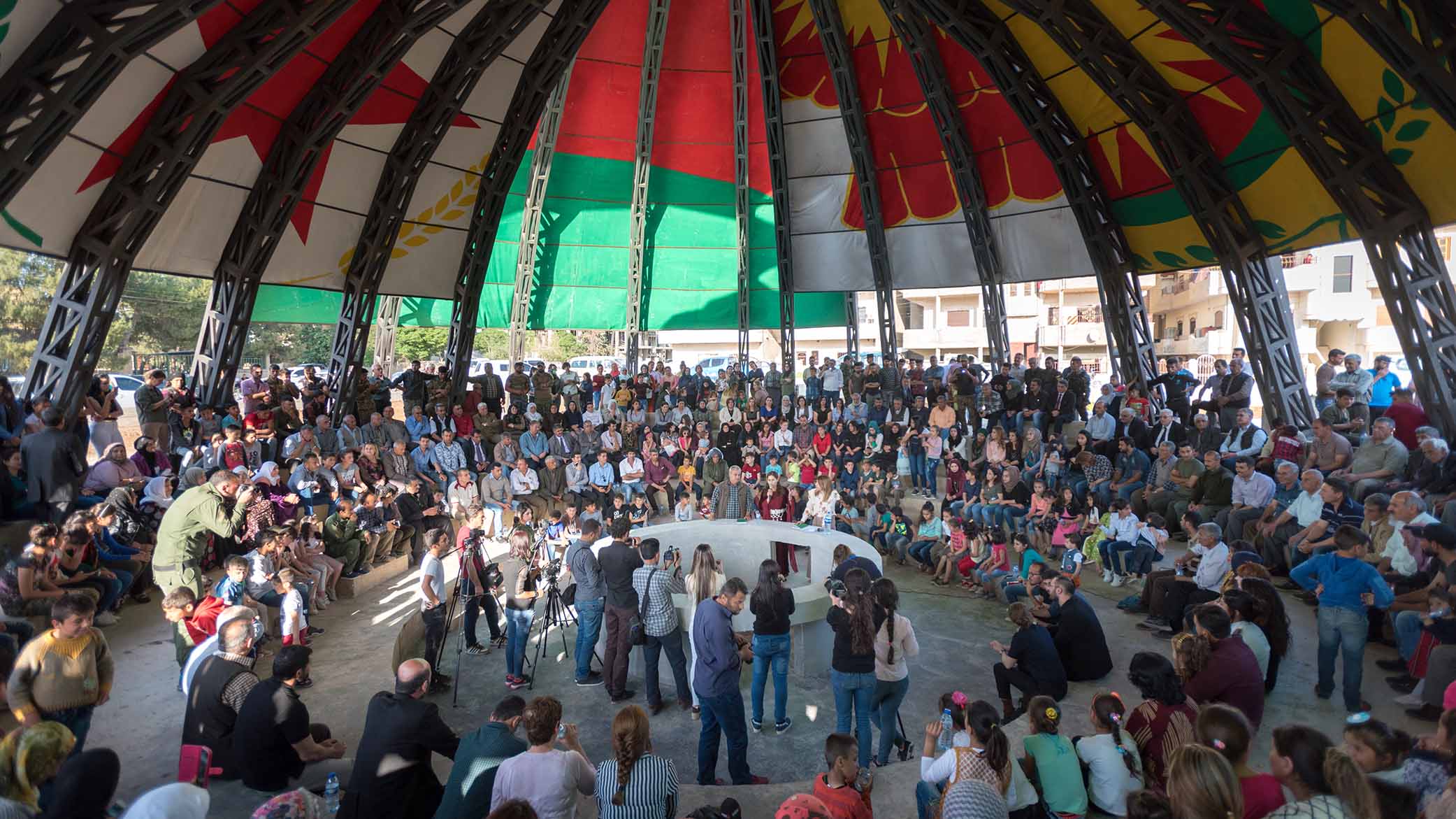
Jonas Staal, New World Summit - Rojava (2015-2018). According to the artist, "The New World Summit is an artistic and political organization that develops parliaments with and for stateless states, autonomist groups, and blacklisted political organizations."
Staal in effect addresses a notion of artistic autonomy that was formulated by the 19th-century Dutch liberal politician Johan Rudolph Thorbecke, who once stated during a parliamentary debate that ‘art is not the government’s business, to the extent that the government has neither any judgment, nor any saying in the area of art.’ 8 Thorbecke thus positioned the freedom of art in close relation to constitutional ‘freedom of speech’. Consequently, the Dutch concept of autonomy in the arts effectively conflated the two meanings of autonomy: as freedom of expression, and as art serving its own purpose.
But is the concept of ‘autonomous art’ sustainable at all in a globalised world, in which 19th-century aesthetic theory has become a contested legacy? And hasn’t autonomy always been a myth rather than a fact – given that, in the one way or another, artists and the languages of art have never fully governed themselves, but have always been subject to social, political, economic and material forces?
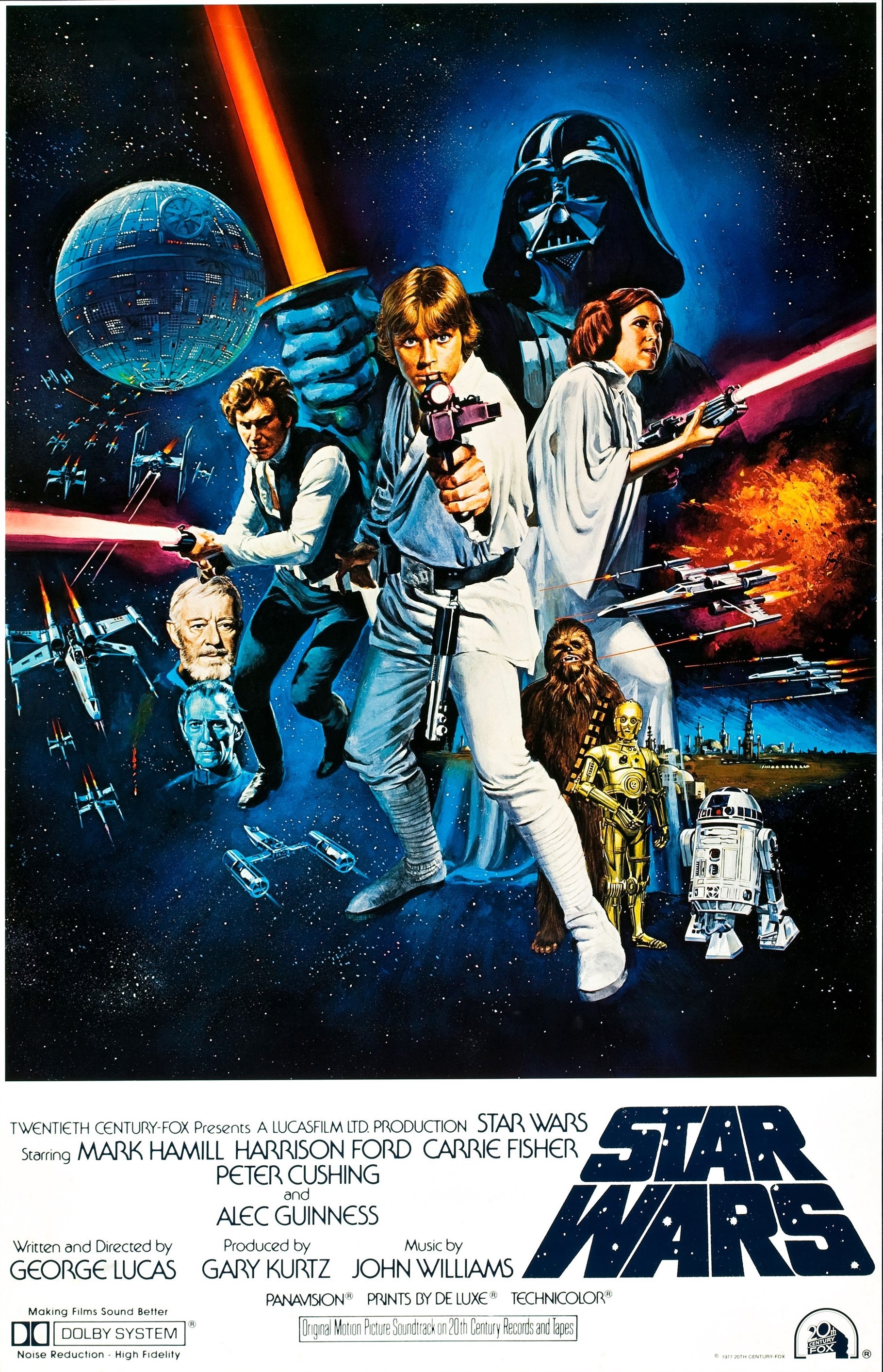
In the 1980s, the sociologist Pierre Bourdieu updated the concept of artistic ‘autonomy’ with a definition that radically breaks with the term’s past. According to Bourdieu, an artwork is autonomous whenever it has not been commissioned by an external party, but seeks its own market. ‘Heteronomous’ art, on the other hand, involves a commissioning party. While this definition may on first sight sound familiar, upon closer inspection it actually is not, since it shifts the definition of autonomy from aesthetics to economics: a Hollywood film would thus be ‘autonomous’ according to Bourdieu, while an artwork that received public project funding would not. The elegance of this definition lies in its materialist precision, as opposed to the idealism upon which the notion of autonomy is based from the perspective of traditional aesthetic philosophy. Finally, Bourdieu’s terminology much better reflects the everyday reality of art and design work.
Art as institutional politics
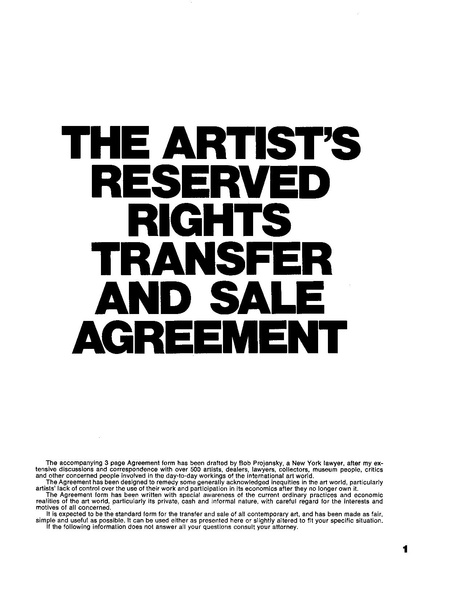
With Bourdieu’s definition, the opportunity for autonomous art production shrinks dramatically, because it rests on economic power. The Institutional Critique movement within contemporary art – from the Art Workers’ Coalition and Seth Siegelaub’s Artist’s Reserved Rights Transfer and Sale Agreement of the early 1970s, to Andrea Fraser’s contemporary performances – effectively drew the same conclusion, claiming ‘autonomy’ in a sense of worker’s rights within the art system. Institutional Critique identifies this system as a political-economic scheme that merely poses as a humanist institution. The activism and interventions of these artists are trade-unionist in nature, since they intervene into the art market and the museum as factories of contemporary art, attempting to change their system from within.
The alternative position corresponds to that of anti-unionist political autonomists, with their squats and social centres: rather than reforming the factories, they chose instead to establish self-run spaces, cooperatives and commons outside of these factories. The history of this self-organised art goes back about as far as that of Institutional Critique and includes, for example, artist-run film co-ops (which were intended to make artist-filmmakers independent from industry facilities), artist-run ‘producer galleries’, and the various projects that have been mapped in the Rotterdam Autonomous Fabric. Within these initiatives, autonomy describes a mode of organisation in which the organisational format itself becomes the art.
Systems and self-organisation
In the field of study known as general systems theory, this type of self-organisation is considered autopoetic, a term that refers to any organism, social or technological system that constructs itself and has some degree of operational independence. General systems theory began as a post-World War II school of thought that sought to bridge or transcend existing academic disciplines including biology, physics, engineering, psychology and sociology. It prominently involved the biologist Ludwig von Bertalanffy, the child psychologist Jean Piaget, the Nobel prize-winning chemist Ilya Prigogine, as well as Isabelle Stengers, now a leading interdisciplinary philosopher of science, culture and politics. General systems theory described forms of organisation, whether found in nature or culture, in general terms, such as the degree to which these systems are ‘open’ or ‘closed’, and which forms of exchange or metabolism exist between them. Based upon this description, systems theorists also formulated the concepts of the environment and ecology.
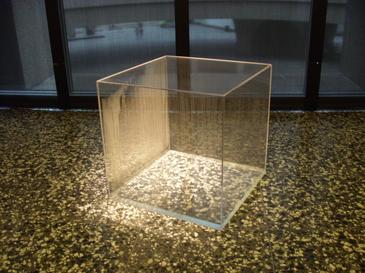
Among the first artists to use general systems theory in their work was the (later Art Workers’ Coalition member) Hans Haacke. His Condensation Cube (1963-65) is a square glass cube containing drops of water that condense as soon as the room temperature rises in response to the body heat of museum visitors. It is thus an open, context-dependent system that interacts with its environment, despite its appearance as a piece of self-contained, abstract and thus highly autonomous art. It uses a visual language associated with autonomy in order to question autonomy, whereas Paglen’s and Appelbaum’s (visually similar) Autonomy Cube is an ostensibly open, interactive system that seeks refuge in art spaces in order to partially close itself off and prohibit physical interference.
In the 1970s, the updated general systems theory of the biologists and philosophers Humberto Maturana and Francisco Varela abandoned the older dualism of open and closed systems in favour of a model of open, living systems that still involve ‘operational closure’: life, according to Maturana and Varela, is based on self-organisation (‘autopoiesis’), from cell division to free will and the unpredictable behaviour of living beings. Autonomy, in other words, is the product of a dialectics of openness and closure. The child psychologist Jean Piaget developed systemic self-organisation into a pedagogical model, in which educators accept the child’s self-constructed world (such as a fairy-tale universe, for example) without superimposing their own worldview. The sociologist Niklas Luhmann applied the principle of autopoiesis to social organisation, in a rather bleak way: in his model of self-organisation, the true function of any institution is not to serve its stated purpose, but merely to preserve itself. If one believes Luhmann, then the purpose of the art system is only its own self-maintenance; thus it can neither be changed through Institutional Critique from within, nor externally through alternative spaces.
Whether or not Luhmann’s hypothesis is true, art does not exist – from the perspective of general systems theory – as an autonomous entity, but only within numerous interdependencies with other systems, in a complex ecology. Openness and closure, autonomy and heteronomy, are thus no longer binary categories, but exist in complex gradations and relations (to say this is to state a truism, since any claims of ‘autonomy’ for art have always been abstractions and idealisations).
The same is true for self-organisation in technological systems. Statistical pattern recognition algorithms known as ‘neural networks’ (which form the core of today’s most commonly used artificial intelligence technology) work using a combination of openness and operational closure: openness, by absorbing data sets (such as all chess games ever played, or camera images of streets) and using these to deduce patterns; closure, by reiterating this process in countless recursions in order to improve recognition as well as subsequent operations, such as moving chess figures or driving a car.
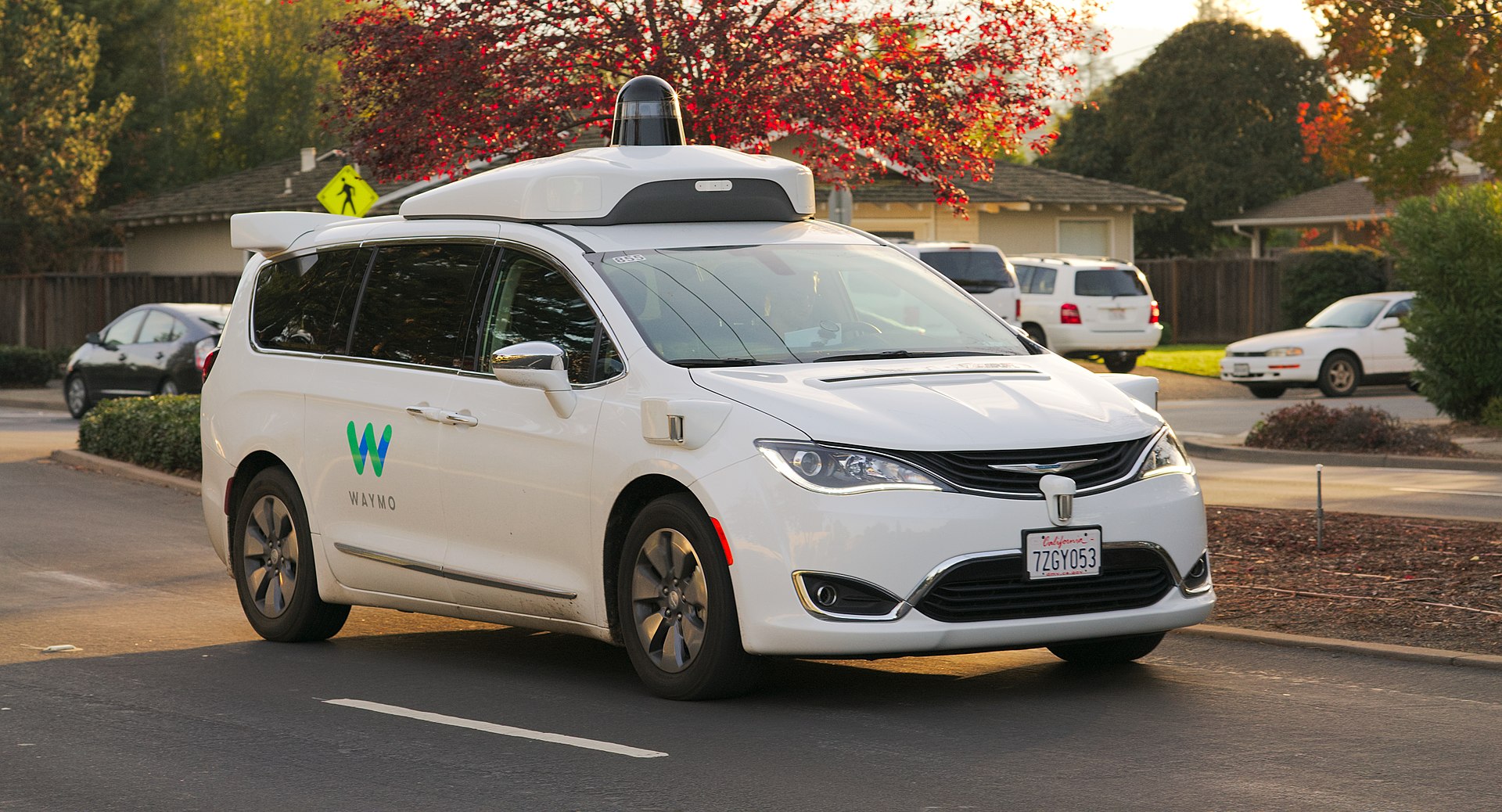
By Dllu - Own work, CC BY-SA 4.0, https://commons.wikimedia.org/w/index.php?curid=64517567
These technological developments are having a profound and rapid effect upon our everyday understanding of the term ‘autonomy’: from a formerly humanist attribute describing an individual’s agency and free will, to a post-humanist concept of ‘autonomous systems’ that includes social media bots as well as unmanned drones performing ‘signature attacks’ (i.e. shooting targets that A.I. pattern recognition systems have identified as likely adversaries; a form of contemporary warfare analysed, for example, by the artist and geographer Trevor Paglen).
Issues
An Autonomous Fabric of artist-run spaces, as it has been mapped for Rotterdam, remains a humanist endeavour. This begs the question of the role of any non-human actors within the network. Considering only the most obvious example, the autonomously running Bibliotecha servers: is each of these a self-organised space and node within the Autonomous Fabric?
But there is a more fundamental question:
• If autonomy and self-organisation do not exist as absolutes, but if autonomy is instead defined as being always relative (in the sense of operational closure within an open system), and embedded into ecologies of interdependence;
• if the relation between autonomy and dependence is not merely dialectical, in the way that critical (aesthetic) theory suggests, but is in fact more complex and multi-layered;
• if autonomy has become a contested – even politically questionable, and increasingly weaponised – concept, one that concerns privilege and implies exclusion of others whose autonomy is denied;
… then, what can then still be gained from identifying a fabric of artists’ self-organised practices as ‘autonomous’?
Though there currently may be no answer to this question, it is at least worth noting that Kant’s ‘disinterested pleasures’ should not be categorically written off just yet, as these can still usefully describe autopoetic moments of indeterminacy and unpredictability, even within interdependent systems. As a common attribute of art, squats, nations and self-driving cars, ‘autonomy’ thus remains a highly relevant concept, and one that will continue to be the cause of many misunderstandings.
Details
Footnotes
1. In the same year, a number of artists, critics and curators began an ‘autonomy project’ in collaboration with several Dutch contemporary art spaces in order to critically examine the current status of autonomy in relation to art. See: http://theautonomyproject.org/about
2. (Nolan).
3. Similar projects existed in the 19th-century British Arts and Crafts movement and in Fluxus.
4. (Bey, 104)
5. (Greenberg).
6. This was in a time when left-wing art movements, from Russian constructivism to socialist realism, had rejected aesthetic autonomy as a bourgeois concept.
7. (Staal, 22).
8. The original Dutch: ‘De Kunst is geen regeringszaak, in zooverre de Regering geen oordeel, noch eenig gezag heeft op het gebied der kunst.’ (‘Johan Rudolph Thorbecke’). Thorbecke had a doctorate in literary studies and taught at the German university of Gießen, where he was influenced by 18th- and 19th-century German philosophy.
References
Alexander Alberro and Blake Stimson (Eds.), Institutional Critique: An Anthology of Artists’ Writings (reprint edition), MIT Press, 2011.
Hakim Bey, TAZ: The Temporary Autonomous Zone, Ontological Anarchy, Poetic Terrorism, Autonomedia, 1991.
David Golumbia, The Politics of Bitcoin: Software as Right-Wing Extremism, University of Minnesota Press, 2016.
Clement Greenberg, ‘Modernist Painting’, in: Forum Lectures, Voice of America, 1960.
‘Johan Rudolph Thorbecke’, in: Wikipedia, March 23, 2018, https://nl.wikipedia.org/w/index.php?title=Johan_Rudolph_Thorbecke.
H. R. Maturana and F. J. Varela, Autopoiesis and Cognition: The Realization of the Living, D. Reidel, 1980.
Michelle Nolan, AVL, May 6, 2008, http://micalene.blogspot.com/2008/05/avl.html.
Jonas Staal, Art in Defense of Democracy, 2012, http://www.jonasstaal.nl/site/assets/files/1205/art_in_defense_of_democ….